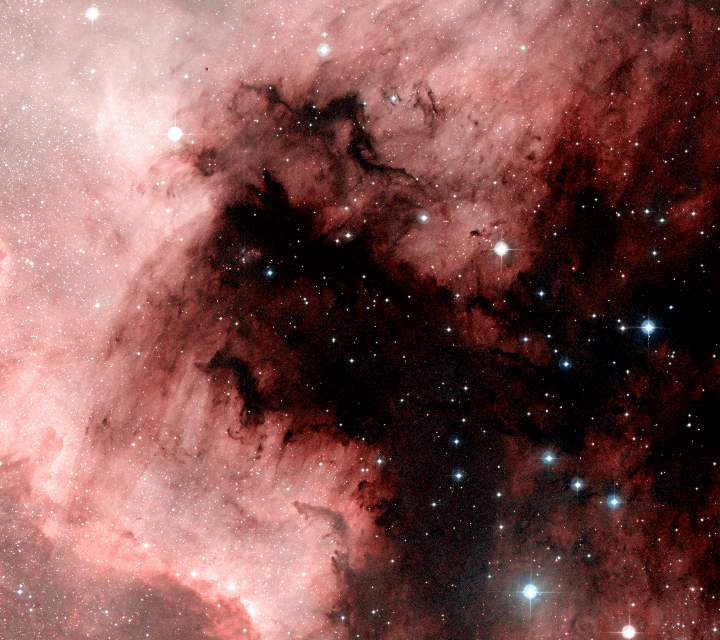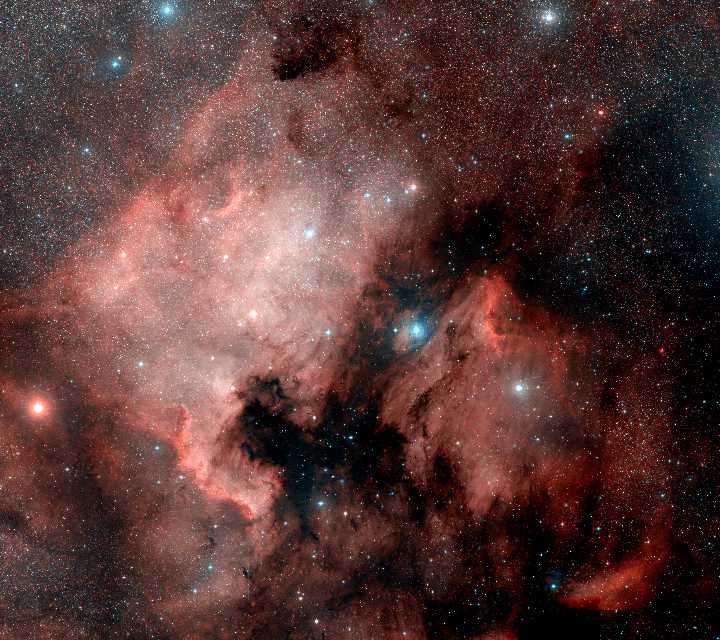
The North America and Pelican Nebulae. Image size: 4.0°x3.6°. DSS image. © CalTech/Palomar
The North America and Pelican nebulae are two parts of the same nebula separated by lanes of dust. On the left is the North America nebula which looks vaguely like the outline of the North American continent. The region on the right is called the Pelican nebula.

There are four bright nebulous regions here which are in the NGC/IC catalogues. The North America nebula (NGC 7000) is the brightest part. The other three nebulae listed here (IC 5067/68/70) are all parts of the dimmer Pelican nebula.
1 2 3 4 5 6 7 8
Catalogue Equatorial Galactic Size Type Distance Size Other Names
Number Coordinates Coordinates (arcmins) (ly) (ly)
RA (2000) Dec l° b°
-----------------------------------------------------------------------------------------
IC 5067 20 50.8 +44 21 84.6 +0.1 25' E 1900 15 Pelican nebula
IC 5068 20 50.8 +42 31 83.2 -1.1 40' E 1900 20 Pelican nebula
IC 5070 20 50.8 +44 11 84.5 0.0 60' E 1900 35 Pelican nebula
NGC 7000 20 58.8 +44 31 85.6 -0.9 120' E 1900 65 North America nebula
|
Column 1: The standard catalogue name for the nebula. Column 2: Right Ascension and Declination for epoch 2000. Column 3: Galactic Longitude (l) and Latitude (b). Column 4: Angular size of the nebula in arcminutes. Column 5: Nebula type: E = emission, R = reflection. Column 6: Approximate distance to the nebula. Column 7: Approximate size of the nebula in light years. Column 8: Alternative name of the nebula.
There are no obvious star clusters which are definitely known to be part of this nebula. NGC 6996 is probably not a real star cluster but only a random scattering of stars at different distances. It is listed here because many reference sources confuse it with NGC 6997. NGC 6997 is definitely a star cluster, but it is rather old and it probably did not form in the nebula. Collinder 428 may be a foreground cluster.
1 2 3 4 5 6 7
Catalogue Equatorial Galactic Size Distance Age Other Names
Name Coordinates Coordinates (arcmins) (ly) (million
RA (2000) Dec l° b° years)
----------------------------------------------------------------------------------
NGC 6996 20 56.5 +45 28 86.1 +0.1 8' ? ?
NGC 6997 20 56.7 +44 38 85.5 -0.5 8' 2000 100
Collinder 428 21 03.3 +44 35 86.2 -1.4 10' 1550 ?
|
Column 1: The standard catalogue name for the cluster.
Column 2: Right Ascension and Declination for epoch 2000.
Column 3: Galactic Longitude (l) and Latitude (b).
Column 4: Angular size of the cluster in arcminutes.
Column 5: Distance to the cluster.
Column 6: Approximate age of the cluster in millions of years.
Column 7: Alternative name of the cluster.
References: Dias W, Alessi B, Moitinho A, Lépine J, (2002). New catalogue of optically
visible open clusters and candidates. Astron and Astrophys, 389, 871.
This map shows the entire emission nebula, which extends across four degrees of the sky, which at a distance of 1900 light years corresponds to a diameter of 130 light years. The very bright star on the right side of this map is Deneb - it is a supergiant star which may be at a similar distance as the nebula.
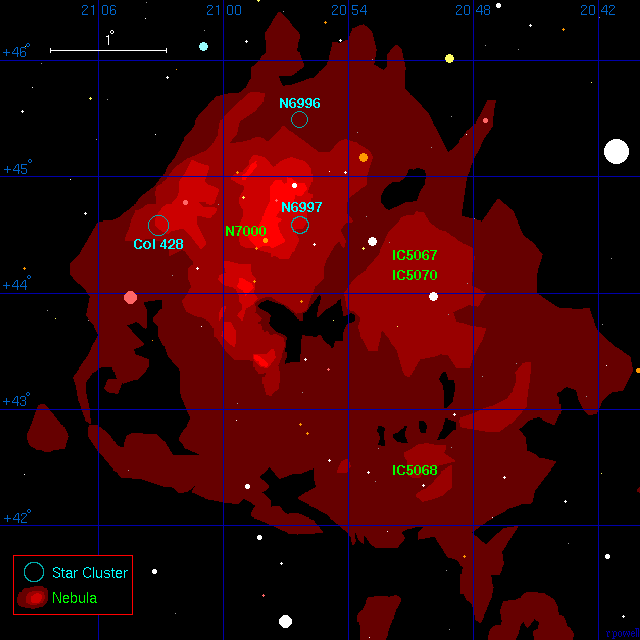
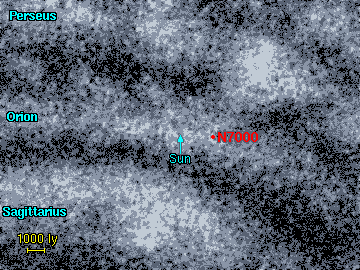
|
The North America and Pelican nebulae are located in the Orion Arm of the Galaxy. Recent estimates of the distance to this nebula put the distance between 1800 and 2000 light years. |
This is a dense pillar of gas and dust (located at RA=21h00m30s Dec=+43°52') in the North America nebula. These enormous columns of gas are a common feature in many nebulae and the material inside them is often dense enough to collapse to form stars. This column of gas is 7 light years long, and you could fit 10 billion billion billion Earth-size planets inside it.
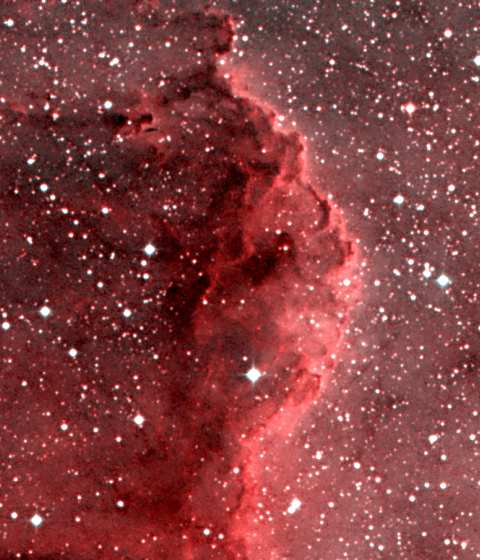
Below - a close-up view of another part of the North America nebula showing the distinctive dark nebula known as LDN 935 (it should perhaps be called the Hudson Bay nebula). This dark nebula lies at the front of the North America nebula and it blocks the light behind it.
